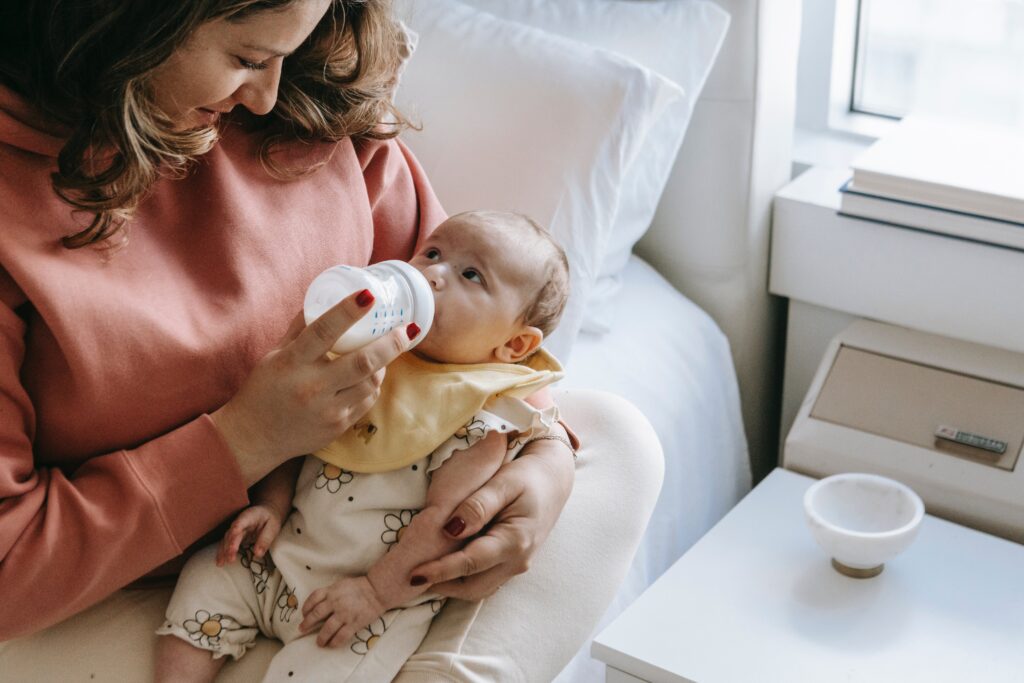What Are Sleep Associations?
March 14, 2023

One of the most common complaints I hear from parents is that their infant or toddler wakes up multiple times at night and requires assistance to get back to sleep. This is often exhausting for parents. The primary cause for this is having negative sleep associations. Today we’re going to discuss what sleep associations are and why they are important.
What Are Sleep Associations?
Sleep associations are basically anything that helps you to fall asleep. This includes the items, movements, or parental presence that help the child fall asleep more quickly at bedtime. The child then also needs these same interventions in the middle of the night to fall back asleep. We all have brief arousals between sleep cycles; this is normal and expected. We wake briefly at the end of sleep cycles which can happen 2-6 times per night, sometimes more in a younger child. If an infant or toddler wakes up, they often need help getting back to sleep unless they’ve learned the skill of independent sleep.
Common sleep associations including feeding to sleep, rocking, and bouncing to sleep. There are positive and negative sleep associations. A positive sleep association is something your baby or toddler can use or do on their own to get themselves back to sleep. On the other hand, a negative sleep association requires the parent to do something to help the child back to sleep. We’ll look at some examples below.
Positive Sleep Associations
Positive sleep associations refer not only to something that your child can do to comfort and help themselves back to sleep, but also refer to sleep cues that signal your little one it’s time to sleep. Sleep cues include a predictable and relaxing bedtime routine that help sets the stage for the transition from awake to asleep. Common sleep cues include a bedtime story, a song, a kiss goodnight and a sleep sack. Other positive associations include white noise, holding a lovey, humming or babbling to themselves.
Negative Sleep Associations
Common negative sleep associations for infants and toddlers including feeding, rocking, bouncing to sleep, and replacing a pacifier. These almost always require parental intervention.
Why Are They Important?
Children who learn to fall asleep at bedtime with certain conditions present will require these same conditions to return to sleep following normal nighttime arousals. Parents are usually happy to help their child fall asleep at bedtime; whereas, helping their child back to sleep at midnight and 3am is less desirable.
I typically don’t worry about negative sleep associations until after 3 months of age. If you want to rock your newborn to sleep sometimes, you totally should! Between 3-4 months, an infant becomes capable of independent sleep and this is a great time to create positive sleep associations and work on sleep training. That being said, it’s never too early to set up healthy sleep habits. Next, we’ll look at how you can start creating positive sleep associations at any age.
How To Create Positive Sleep Associations
It’s never too late to start creating positive sleep associations. There are three great ways you can start today.
- Make sure your infant or toddler is getting an appropriate amount of sleep. Being overtired can make it very difficult for your little one to settle down. This means knowing how much sleep your little one needs at nighttime and during naps. Check out this post for more information.
- Create a solid bedtime routine. Having a predictable and consistent bedtime routine will create lots of sleep cues. As we discussed above, each step in the bedtime routine should tell your little one it’s time to sleep. Reading stories together, singing a song, changing into a sleep sack can all be positive sleep associations that get your baby or toddler ready to make the transition from awake to asleep.
- Do not feed to sleep. Feeding to sleep (nursing or with a bottle) is one of the most common sleep associations out there. It is also one of the hardest to break. If you currently feed your baby to sleep, I recommend trying to move the feed earlier into your little one’s bedtime routine and doing it in a well lit space. Ideally you set up your baby’s routine to eat, play, then sleep. This helps avoid creating that sleep association from the beginning.
How To Break Negative Sleep Associations
There are two common ways to address negative sleep associations – gradual withdrawal and sleep training. With gradual withdrawal, you will gradually reduce how much assistance you are providing to help your child to sleep. For example, if you currently rock your baby to sleep, you can instead just sit without any movement for a few days. After a few nights of practicing this, you would then place them into their crib awake but calm and just place a hand on their belly. Gradual withdrawal gives the baby a chance to learn self-soothing with less and less parent interaction.
Sleep training can be a very effective way to break negative sleep associations. This is a faster but sometimes more difficult approach. Your baby may have a harder time initially since you’re removing their sleep crutches, but ultimately you will see faster progress towards independent sleep. There are many ways to sleep train. Many parents think of crying it out or extinction, but there are so many more options than this. I specialize in helping families make a personalized plan to get their little one to sleep independently so if you need help, I invite you to contact me.